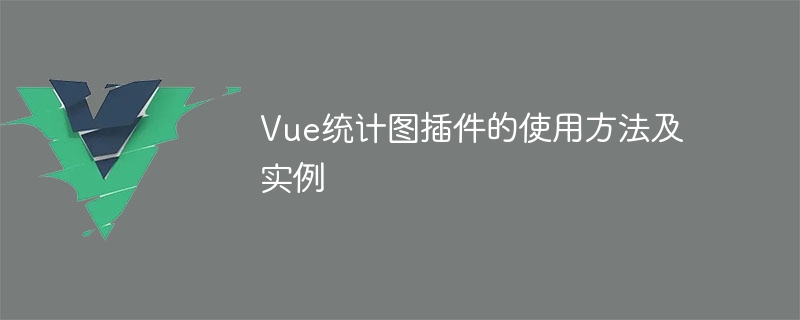

How to use the Vue statistical chart plug-in and examples
Introduction:
When developing web applications, statistical charts are very useful data visualization tools. Vue.js is a popular JavaScript framework that provides many convenient plugins and tools for creating interactive statistical charts. This article will introduce how to use the statistical chart plug-in using Vue.js and provide some code examples.
1. Install the Vue statistical chart plug-in
Before we start, we need to make sure that Vue.js has been installed. Then, we can use npm or yarn to install the required statistical chart plug-in.
Taking echarts as an example, you can install the echarts plug-in through the following command:
npm install echarts --save
or
yarn add echarts
2. Use the Vue statistical chart plug-in
In the Vue component, we need to introduce the echarts library and initialize the echarts instance in the mounted life cycle hook.
<template>
<div id="chart"></div>
</template>
<script>
import echarts from 'echarts';
export default {
mounted() {
let chart = echarts.init(document.getElementById('chart'));
// 在这里使用echarts实例来绘制图表
}
}
</script>
<style>
#chart {
width: 100%;
height: 400px;
}
</style>Use the echarts instance in the mounted life cycle hook to create and configure the chart. Below is a simple example showing how to create a histogram.
mounted() {
let chart = echarts.init(document.getElementById('chart'));
chart.setOption({
title: {
text: '柱状图示例'
},
xAxis: {
data: ['A', 'B', 'C', 'D', 'E']
},
yAxis: {},
series: [{
name: '数据',
type: 'bar',
data: [5, 20, 36, 10, 10]
}]
});
}To update the chart, simply reset the options and call the setOption function. Here is an example that shows how to update the data of a histogram by clicking a button.
<template>
<div>
<div id="chart"></div>
<button @click="updateChart">更新图表</button>
</div>
</template>
<script>
import echarts from 'echarts';
export default {
mounted() {
this.chart = echarts.init(document.getElementById('chart'));
this.renderChart();
},
methods: {
renderChart() {
this.chart.setOption({
title: {
text: '柱状图示例'
},
xAxis: {
data: this.data.labels
},
yAxis: {},
series: [{
name: '数据',
type: 'bar',
data: this.data.values
}]
});
},
updateChart() {
this.data = {
labels: ['A', 'B', 'C', 'D', 'E'],
values: [15, 25, 40, 5, 20]
};
this.renderChart();
}
},
data() {
return {
data: {
labels: ['A', 'B', 'C', 'D', 'E'],
values: [5, 20, 36, 10, 10]
}
};
}
}
</script>This is a basic example using Vue.js and echarts library. You can use other statistical chart plug-ins according to your own needs, such as Highcharts, Chart.js, etc.
Conclusion:
Statistical charts are very useful data visualization tools. Vue.js provides many convenient plug-ins and tools to create interactive statistical charts. In this article, we introduce how to use the chart plugin with Vue.js and provide some code examples. I hope this article was helpful and made it easier for you to add statistical charts to your Vue.js application.
The above is the detailed content of How to use Vue statistical chart plug-in and examples. For more information, please follow other related articles on the PHP Chinese website!